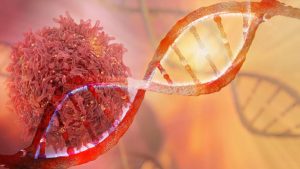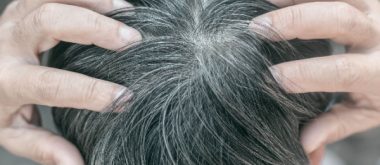Throughout our lives, our cells are constantly exposed to internal and external influences that can damage DNA. This DNA damage is a known factor in the development of aging processes and cancer, but scientists have long sought to understand the exact relationship—in particular, how DNA-damaged stem cells affect tissue health over time.
Discovering How DNA Damage Causes Hair to Turn Gray
Melanocyte stem cells (McSCs) are specialized cells that give rise to melanocytes, the pigment-producing cells responsible for the color of our hair and skin. In mammals, these stem cells are located in an area of the hair follicle known as the bulge-subbulge region. Here, they exist as immature melanoblasts and ensure that hair and skin retain their color through repeated regeneration cycles.
A study published in Nature Cell Biology, led by Professor Emi Nishimura and Assistant Professor Yasuaki Mohri of the University of Tokyo, investigated how McSCs respond to different types of DNA damage. Using long-term lineage tracing and gene expression profiling in mice, the researchers discovered that McSCs undergo a process known as senescence-coupled differentiation (seno-differentiation) in response to DNA double-strand breaks. In this state, the stem cells mature permanently and are eventually lost, leading to hair graying. The process is controlled by the activation of the p53-p21 signaling pathway.
When McSCs are exposed to certain carcinogens, including 7,12-dimethylbenz(a)anthracene or UV-B radiation, they do not follow the same protective mechanism. Even in the presence of DNA damage, these cells avoid seno-differentiation and continue to renew themselves. Instead, they multiply clonally, supported by KIT ligand signals released from the surrounding tissue and epidermis. These niche-derived signals block the protective differentiation response and drive the stem cells into a cancer-prone state.
Connection Between Aging, Cancer, and Cellular Self-Destruction
According to Nishimura, “these results show that the same stem cell population can take opposite fates—exhaustion or expansion—depending on the type of stress and the signals from the microenvironment.” She adds, “This means that gray hair and melanoma are no longer considered independent events, but rather different outcomes of the stress responses of stem cells.”
The researchers emphasize that their findings do not mean that gray hair prevents cancer. Rather, seno differentiation appears to serve as a stress-induced defense mechanism that removes damaged stem cells before they can become harmful. If this protective mechanism fails or is bypassed, these damaged cells can survive and potentially lead to melanoma.
By uncovering the molecular signaling pathways that determine whether stem cells undergo protective depletion or dangerous expansion, this study links the biology of tissue aging to the development of cancer. It also highlights the value of the natural removal of damaged stem cells through “senolysis,” a biological process that contributes to cancer prevention by sacrificing cells that might otherwise become malignant.






